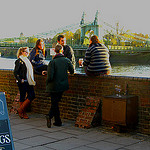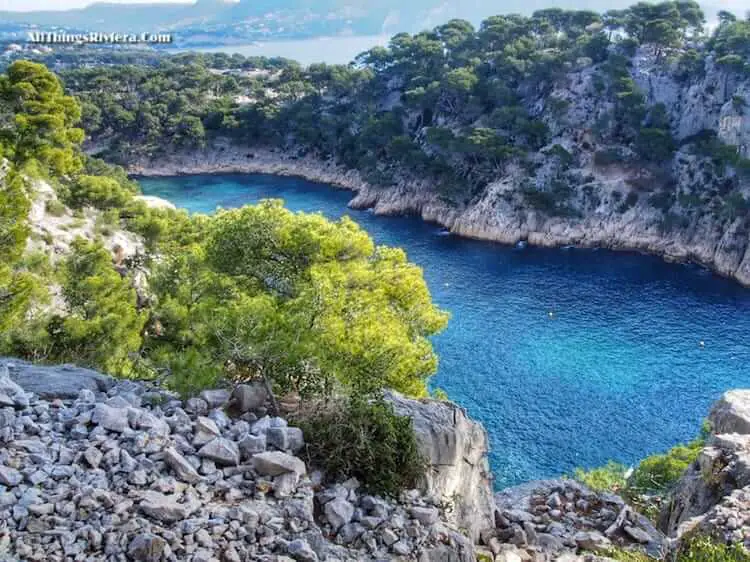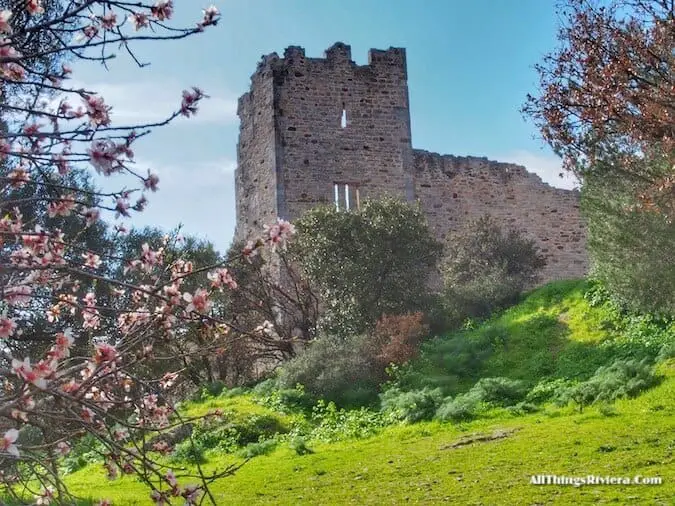Here is one point that even the grumpiest visitor of Monaco must concede: the principality is not stingy with its wealth.
It provides spotlessly clean and ultra-safe streets (with police officers at every other corner and a dense array of high-tech CCTV systems), while lifts and escalators help the tired huddled masses of visitors along their way.
And when these masses need to take a breather, there is a whole host of public gardens inviting them to relax in comfortable surroundings.
Plus, as an added bonus, there is the public art.

Has anybody ever counted the number of works on display in the streets of Monaco? I bet there must be at least a hundred. Which is not bad for a city state with a surface area of less than one square mile – end certainly enough to put much larger places to shame.
Follow the Monaco Sculpture Trail and discover a treasure trove of art
There are many ways of exploring this treasure trove, one of which is based on serendipity and the fact that, wherever you go in Monaco, you are bound to run into some piece or the other.
But for those who like to follow a more systematic method, there is the Monaco Sculpture Trail.
This trail, laid out by the local tourism authority, is 2 km long and has the added advantage of taking you through a bit of unknown Monaco: the residential quarter of Fontvieille in the west of the principality that was built in the 1970s and 80s on reclaimed land.
Take bus no. 100 to the Place d’Armes and walk to the Place du Canton (the large roundabout in front of the tunnel that leads westward to Cap d‘Ail) and take the escalator down.
If you see this statue, the “Big Bear” by Francois-Xavier Lalanne, on your right hand side, …

… you know you are on the right way.
One level down, walk past the Leo Ferré auditorium and look across the roofs for this mosaic, Fernand Léger’s “The Three Musicians”.
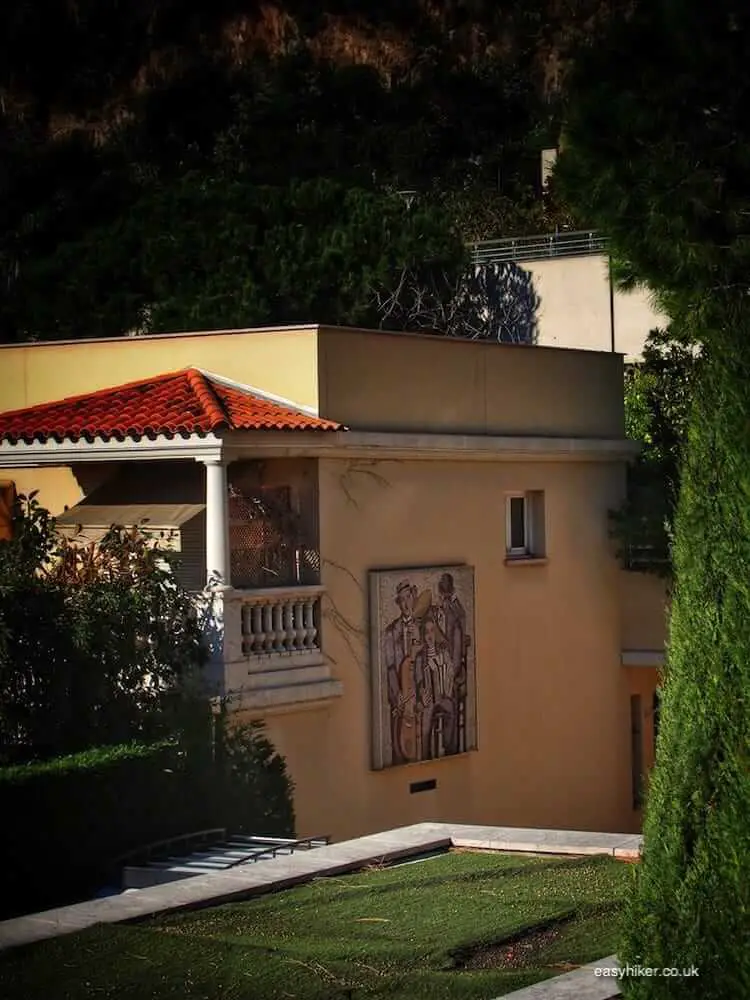
This mosaic marks the entrance to the Parc UNESCO, the first stage post of today’s walk.
This small but beautiful garden is full of public statues, mainly modern and contemporary in flavour, including this work ,“The Fist” by the “New Realist” César Baldaccini, known beyond the circles of art lovers as the designer of the César trophy, the French film Oscars …
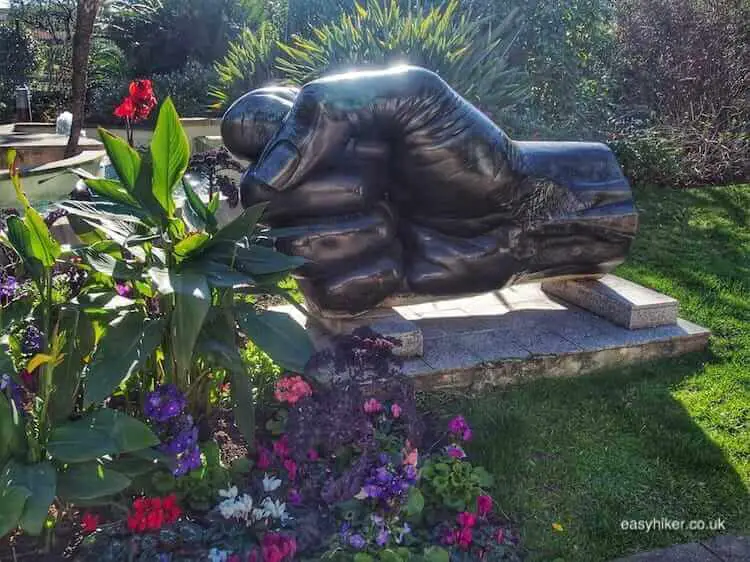
… and “Marta, Crouching” by the Italian sculptor Giuseppe Bergomi.
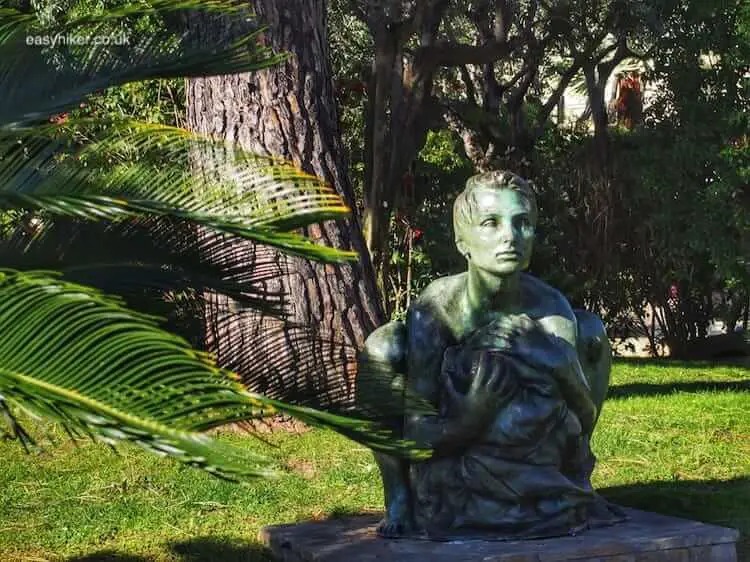
There is, however, also art of a different style like this early “Crouched Bather” by Antoine Bourdelle who started off as a traditional sculptor (even though the Baigneuse’s awkward posture already betrays some unconventional leanings) to become a leading modernist later in the 1920s, teaching Matisse and Giacometti (among others) at a Montparnasse art school.
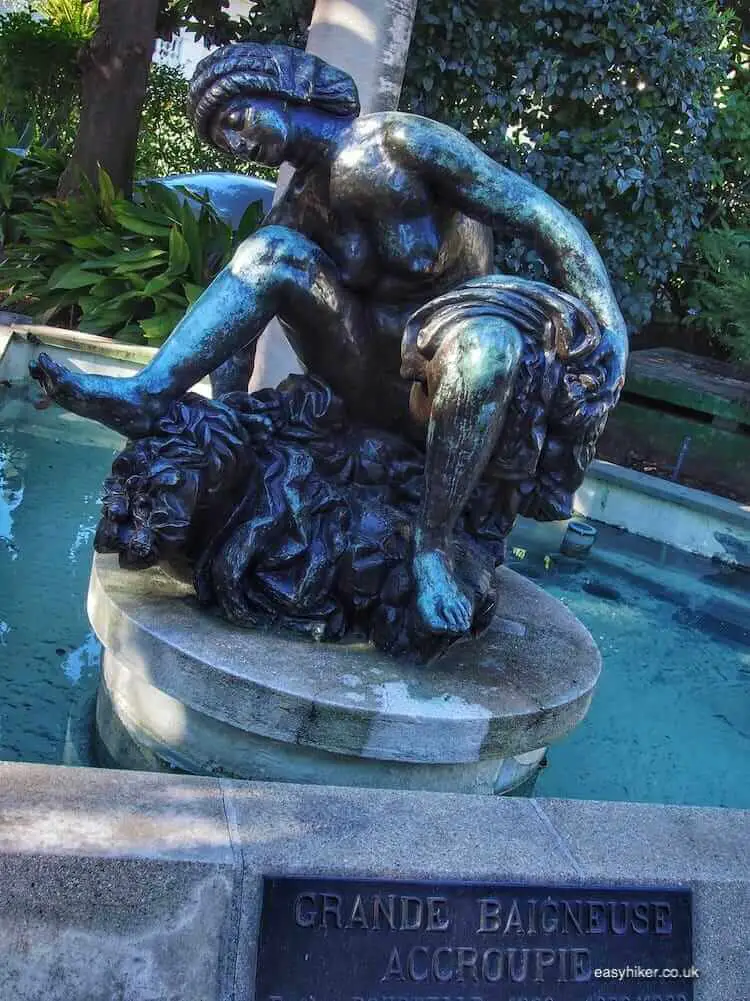
Once you have explored the Parc UNESCO, cross the main road one level below via the footbridge and continue down the quays of the Fontvieille yacht harbour, past “The Carp”.
A few metres behind on the same footpath, see the “Solitary” by the Italian artist Sandro Chia, a former conceptualist who – in the 1970s – went on to establish a neo-figurative group of artists and taught for 20 years at the School of Visual Arts in New York City.
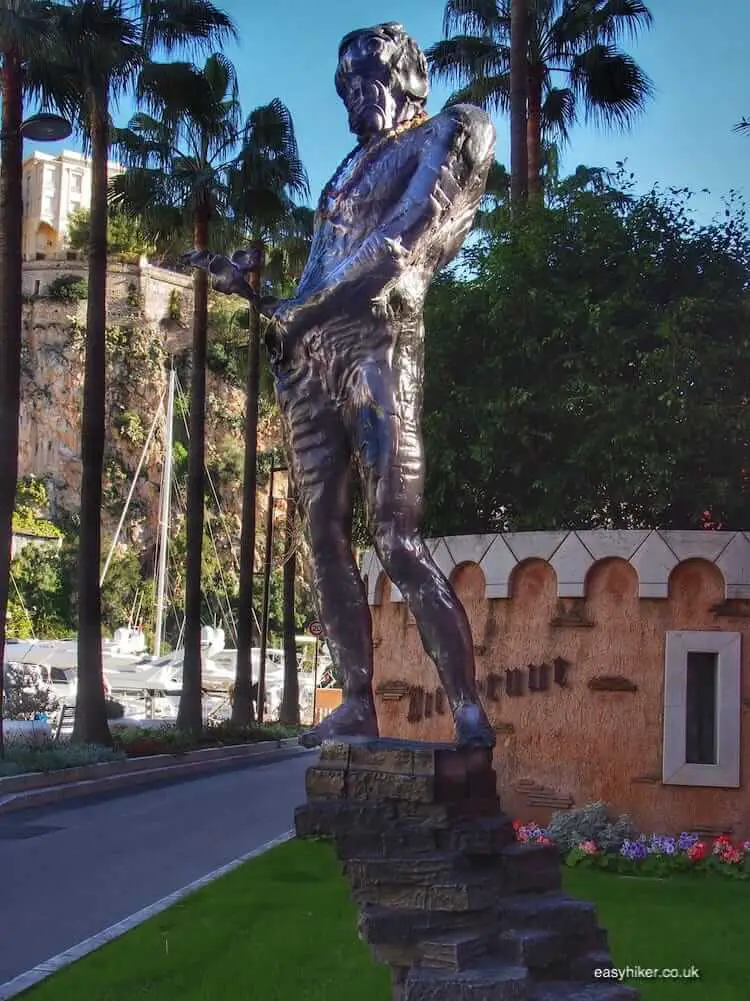
Enjoy the splendid views across the harbour to the rocher, the rock on which Monaco’s old town was built, especially the view of the magnificent Oceanographic Museum.
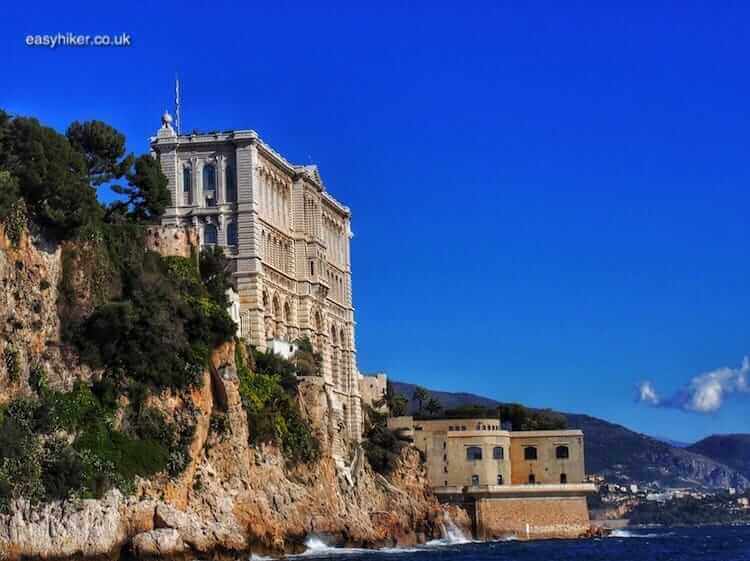
Turn right at the Capitainerie of the Fontvieille yacht harbour towards the park behind the Heliport. This is Fontvieille’s top tourist attraction as the home of the International Circus Festival and the Princess Grace Rose Garden, but the park that surrounds these sites is no less interesting.
Whereas most public gardens are conceived as a single, large and integrated space, this park consists of little, mutually independent pockets, each featuring a bench and, more often than not, a work of art that invites passers-by to sit down for a moment and rest in quiet contemplation.
There are in total seven or eight of these pockets. This one was built around the statue called “Brother and Sister” made by Andre Masson, one of the founding members of the Cubist movement.
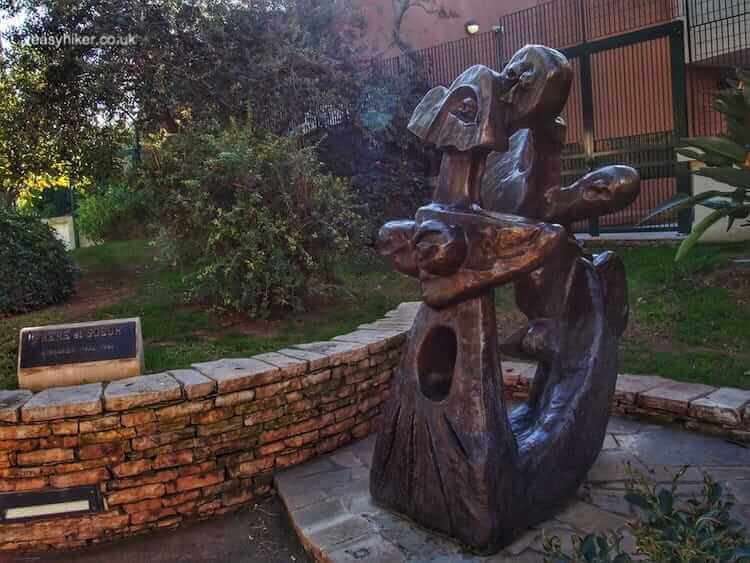
But there is even more to see during a stroll through the park, such as the – characteristically voluptuous – “Woman Smoking A Cigarette” by Fernando Botero …
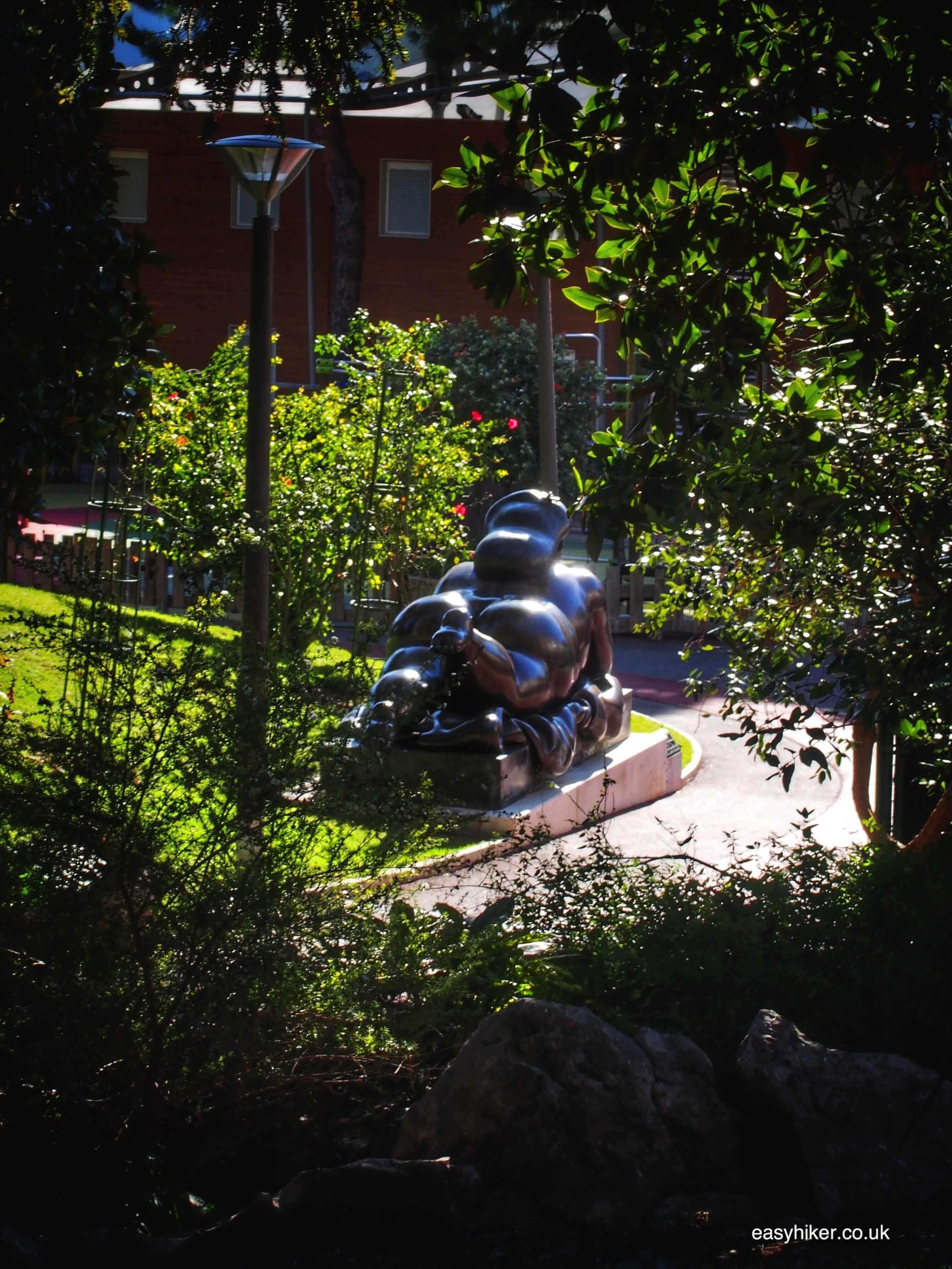
… and the “Fountain of Universal Children’s Rights”, designed by Francesco Maschio, which was inaugurated in November 2000 by Prince Rainier and donated by the association Les Enfants de Frankie.
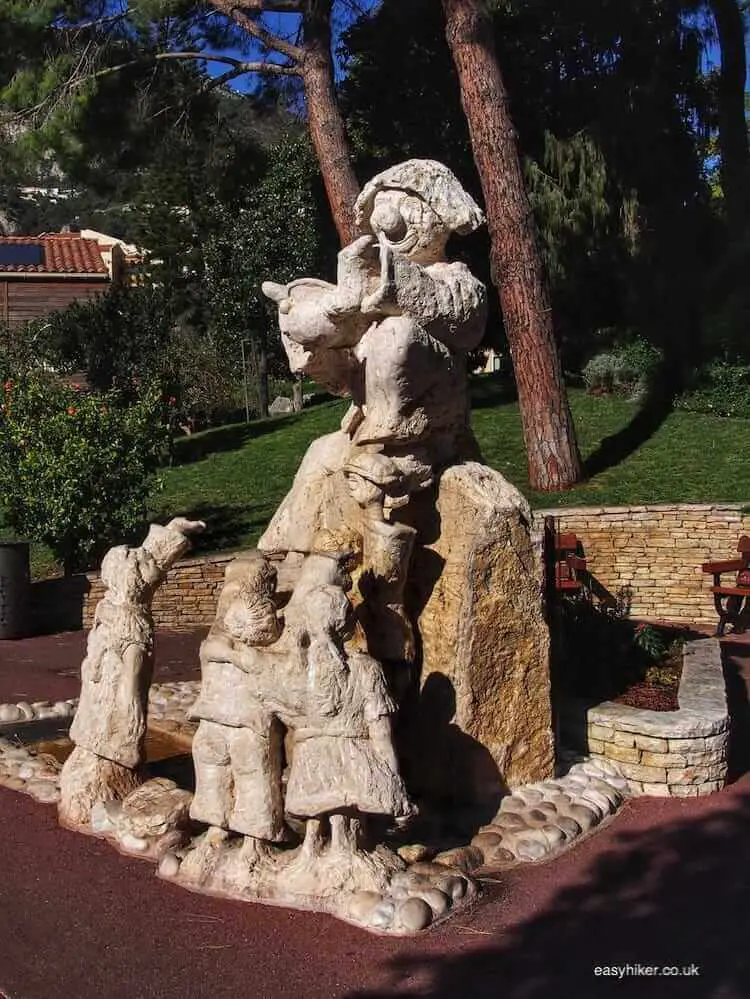
The roll call of members and friends of the association which is attached to the back of the statue reads like a veritable Who’s Who of Monegasque society, providing a fascinating insight into the workings of the city state.
If you want to know what counts in Monaco, this list alone is worth a visit to the park. (The list, in short, is much longer on glamour than on profound achievements and lasting fame.)
Wrap up your walk following the Monaco Sculpture Trail with a visit to the small artificial lake, if only to take a peek at “The Washer Woman”, which was part of the last series of works that resulted from the cooperation between Richard Guino and Pierre-Auguste Renoir, …
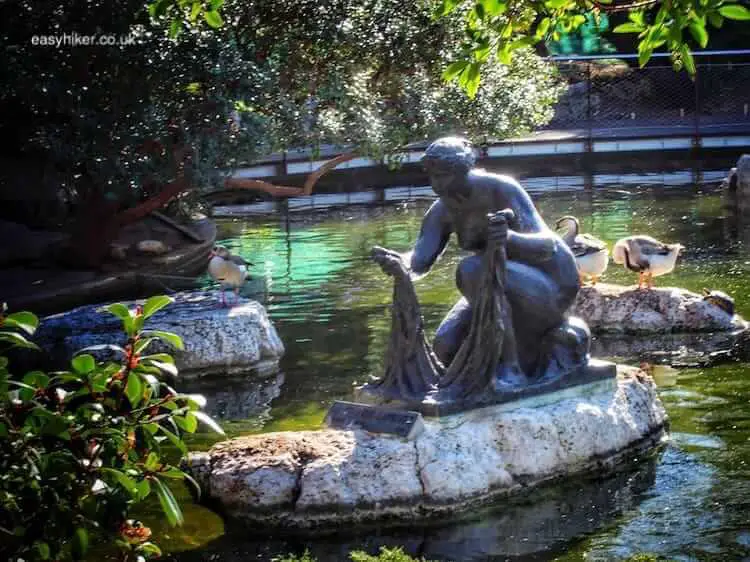
… arguably the biggest name of the Monaco Scuplture Trail.
Richard Guino, the less well-known artist of this pairing, assisted Renoir in his late years when the old master was barely capable of holding a brush between his arthritic fingers never mind of actively engaging in his new-found passion for sculpting.
The question about the exact nature and terms of this collaboration – was Guino just a hired hand or a co-creator? – kept French courts busy for decades after Renoir’s death and was finally settled (in Guino’s favour) only in 1973, the year of Guino’s death.
Return to the town centre via the Avenue des Papalins past the Hotel Columbus. This part of the walk will give you a flavour of the residential quarter around you, which houses approx. 4000 people and constitutes one of the principality’s most populous wards.
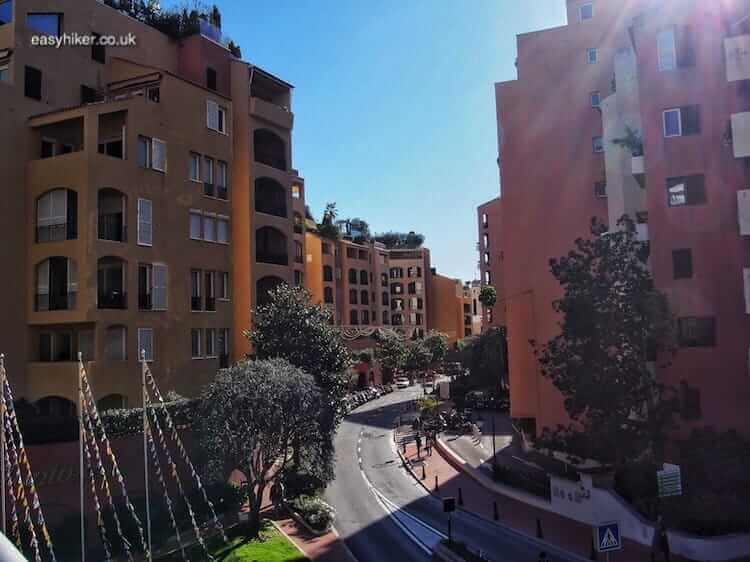
Fontvieille may be less fancy than most other districts in town, but a two-bedroom, 60 square metre apartment will still set you back between EUR 2 and 3 million. And remember: that’s just the flat, not the right to actually live in it full-time.
Before you can receive a Monegasque residency permit, you must have deposited EUR 500,000 at a local bank. As a quid pro quo, the principality offers you a generous fiscal regime: there is no income tax, no wealth tax, no inheritance tax. And, not to forget: one of Europe’s great treasures of public art.
Fortunately, in order to enjoy that, you do not need to be a resident.

